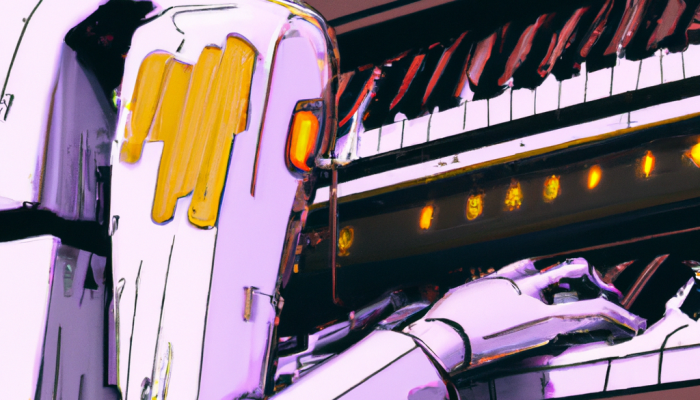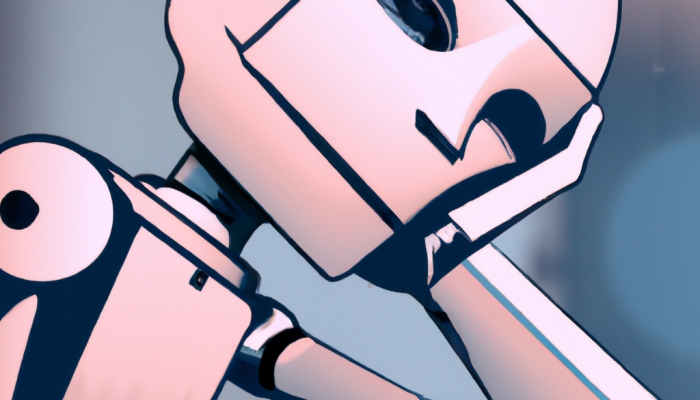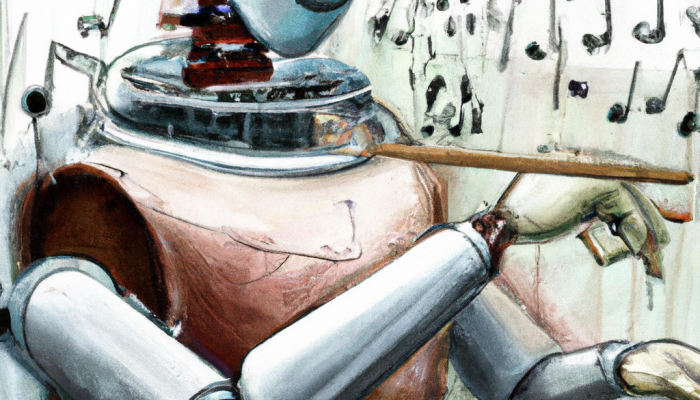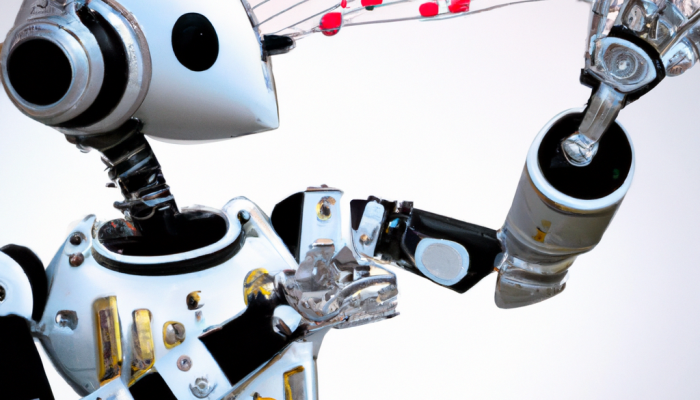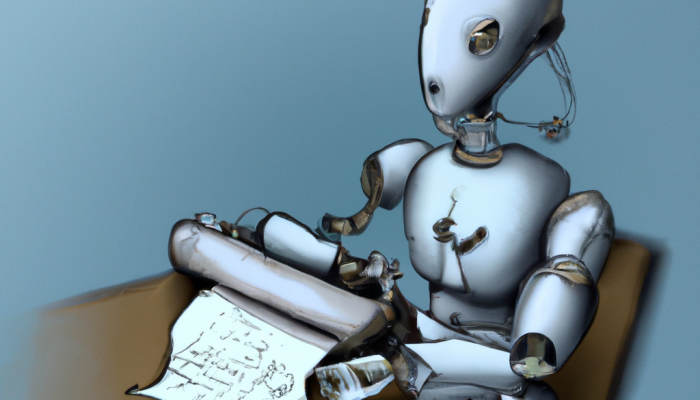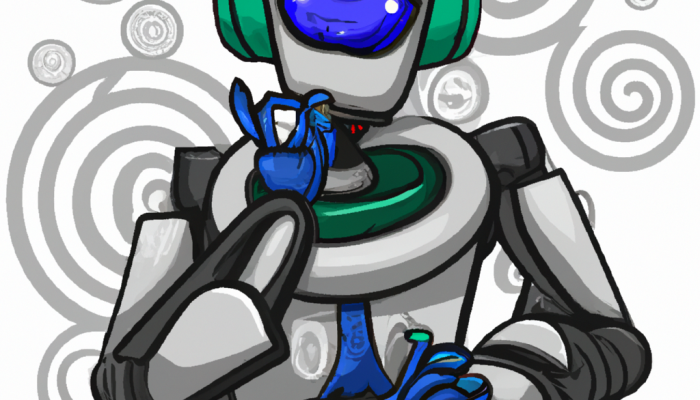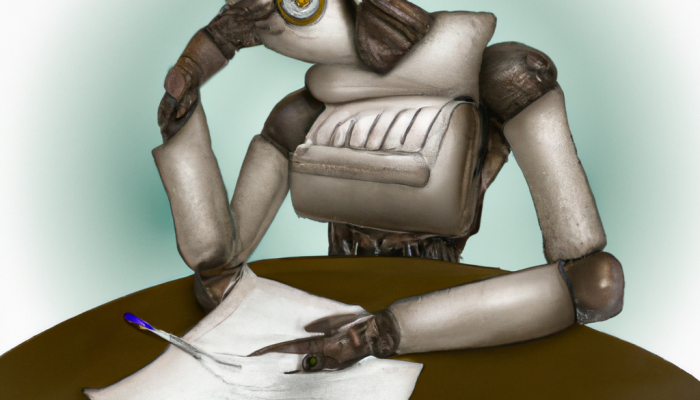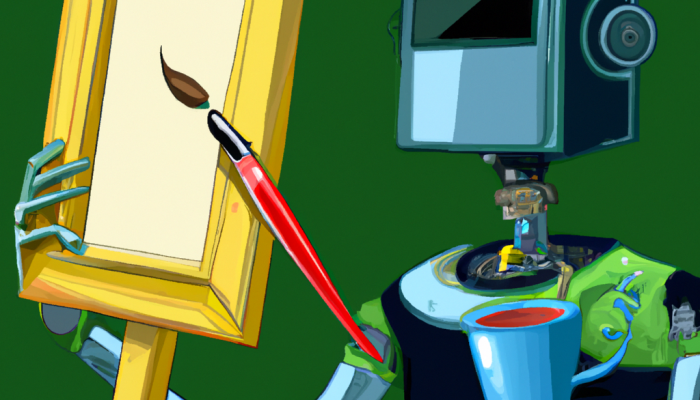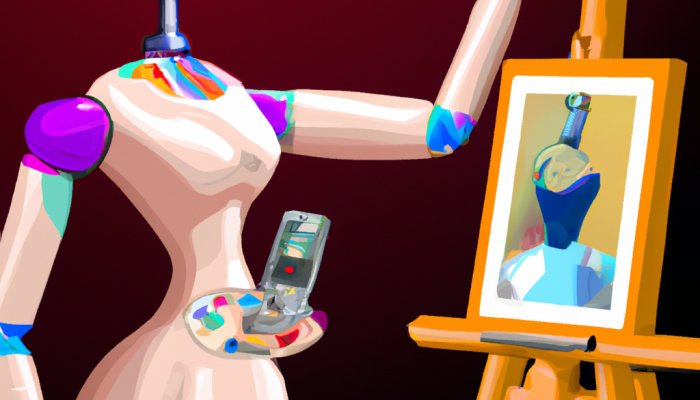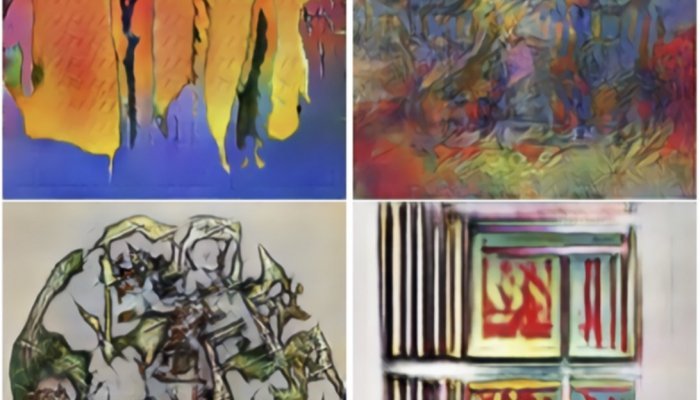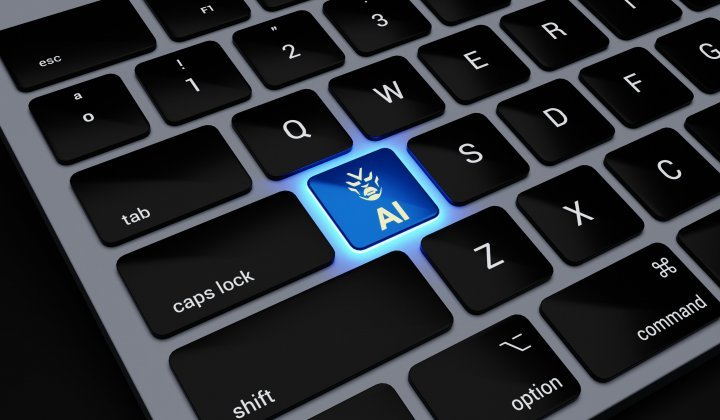For a long time, we’ve been talking about robots taking over our jobs. But much of the conversation so far has focused on manual or repetitive tasks, from stocking shelves in a warehouse to driving a truck across the country to detecting tumours in an X-ray. The uniquely human creative work – writing, painting, composing – was safe from automation, at least until now.
“The visual world is where machine learning has been hugely successful [at] being able to produce extraordinary code that can recognise what’s in an image,” says Marcus du Sautoy, a British mathematician and author of several popular books, including The Creativity Code: Art and Innovation in the Age of AI. “Traditionally, in artificial intelligence, computer vision was the real challenge because a piece of code would look at a picture pixel by pixel and wouldn’t understand what it was seeing. It couldn’t understand what the image was about. But machine learning, by showing it pictures of cats or pictures of dogs, starts to distinguish between the two.”
New algorithms work similarly to an artist’s brain
If a piece of code can recognise images, how good is it at creating its own?
Very good, according to the output of tools such as Midjourney, Stable Diffusion, and DALL·E. These make use of what are called generative adversarial networks, which involve two algorithms working in competition against each other: a generator (that learns about art from the past and tries to create something new based on this) and a discriminator (that ‘tells’ the generator whether it’s gone too far and created a mess or hasn’t gone far enough and has created something we’ve already seen). For Du Sautoy, this is a lot like what goes on in any artist’s mind.
“The poet Paul Valery once said that it takes two to invent anything: one makes up combinations and the other one chooses,” he says. “And I think what’s nice about this new algorithm is that it’s sort of combining those two elements that human creativity exploits.”
People have mixed feelings about AI art
And yet, when people engage with artificial intelligence (AI) artwork that they don’t realise was generated by an algorithm, many end up feeling cheated, even though they might have a greater emotional response compared to paintings created by real people. For Du Sautoy, this is an odd response. Much like laughing at a joke scripted by a machine shouldn’t invalidate our mirth, we shouldn’t discount our how we feel at the sight of AI art.
“Every artist starts with the art of the past,” he says. “Picasso, before he broke the mould, learned how to paint in the style of the great masters. AI is the same. [Moreover], our art is an expression of our emotional world. So if [AI has] learned on our emotional world, why shouldn’t the paintings it starts to produce cause us to have an emotional reaction?”
Text generation algorithms have come a long way
Of course, even though Du Sautoy is starting to see a new style emerging in AI art, not all of the results are successful. It’s been the same with text generation, which began in earnest with the Manchester University Computer that Alan Turing made after he left Bletchley Park after World War II. He, like Ada Lovelace, was beginning to think about the idea of machines doing more than just cracking codes.
“The team were rather surprised when the machine started writing love letters,” Du Sautoy says. “After a while they realised that somebody had written a bit of code and was using a random number generator that Turing had made to fill in this template with random words of love. But now things have gotten more exciting than just the simple templates with GPT-3 [Generative Pre-trained Transformer 3, an autoregressive language model].”
Text generation works better for shortform writing
Right now AI seems to be good at creating short paragraphs or standard journalism stories such as market updates or sports news. Indeed, Du Sautoy was so convinced by the output of text generation tools that he even got AI to write 350 words of his book and offered his readers a challenge: Could anyone find it?
“Up to this date, only one person has spotted the piece that was written by AI, which I think is surprising because it’s so badly written – I asked my editor not to correct anything that was in that passage,” he says. “So I think AI is doing well in shortform and creating convincing poetry. But with longer form, it’s having more of a challenge. It’s not good at telling a story with a larger narrative.”
Longform text generation doesn’t stick to a plot
By example, Du Sautoy cites the work of Botnik Studios, a group of coders and artists who are also big Harry Potter fans. They thought it such a shame that JK Rowling had written only seven volumes of the core series and decided to give an AI all the books so that it could write a new story. It came up with an interesting title – “Harry Potter and the Portrait of What Looked Like a Large Pile of Ash” – and started out well enough. But then it (quite literally) started to lose the plot.
“AI is having a challenge so I think JK Rowling is probably safe at the moment,” Du Sautoy laughs. “Like with the AI jazz improviser [see sidebar], it’s interesting to listen to for about five minutes. But after five minutes, it’s boring because it doesn’t know where it’s going. It just doesn’t have anything it wants to say.”
AI consciousness will be different from our own
Of course, these limitations haven’t stopped people from proclaiming more progress than is perhaps warranted. Indeed, Google fired one of its employees for saying that a text generation algorithm had become sentient. But how exactly will we know when AI gets to this point?
“AI is an interesting new tool for humans to help us develop our creativity,” Du Sautoy says. “And I think the moment we’ll know that AI is conscious is because of its creative output. It will start to need to tell us that there is something going on inside – that this thing is not just code [but] that there is an inner emotional world… This brings to mind the quote from language philosopher Ludwig Wittgenstein, who said that if a lion could speak, we would not be able to understand him.”
Creativity and consciousness are connected
Indeed, Du Sautoy believes that the challenge for knowing whether a piece of code is conscious or not is greater because its world will be so different from our own. Also, because the code is becoming too complex to examine line by line, we need tools to examine it and make sure it isn’t engaging in bad learning (at best) or perpetuating biases (at worst). In doing so, it helps to remember what creativity is in the first place.
“The better definition that I use for creativity by the end of the book is not [research professor] Margaret Boden’s idea that creativity is the ability to come up with ideas or artefacts that are new, surprising, and valuable but that of [psychologist] Carl Rogers, which is that creativity is the best tool we humans have come up with to examine our own inner conscious world and the conscious world of the other,” he says. “I think our creativity emerged at the same time as our consciousness; we needed something to explore how we were feeling… But now we’re creating this new inner world – the inner world of the code – and we’re going to need tools to examine how it’s thinking. And asking it to be creative is an interesting way to explore how it’s thinking [and] has the potential for us to get some inkling of what is about to happen with this AI revolution.”
The history of creativity
We’re not the first generation to think about the creativity of machines. In fact, back in the 1800s, Ada Lovelace was one of the first to contemplate the idea that a machine might do something that we might regard as artistic.
“Charles Babbage had this extraordinary engine that he wanted to make, which was the first hints of a computer,” Du Sautoy explains. “As a young woman, Lovelace went to see this ‘analytic engine’, which Babbage thought would just be good at speeding up calculations. But when she saw this machine, she also saw the potential for it to do things far more interesting than just math.”
In her notes, she wrote that this machine “might compose elaborate and scientific pieces of music of any degree of complexity or extent”. Du Sautoy finds it interesting that she chose music because, like mathematics, it has a lot of connections. Moreover, “they’re both worlds of patterns”.
“I would say math is the science of patterns while music is the art of patterns,” he says. “So [she thought that] if a machine could do math, maybe it could make music. But she also had a word of caution: she didn’t really regard the machine as the one being creative. It was still a human who told the machine what to do.”
“The analytical engine has no pretensions whatever to originate anything. It can do whatever we know how to order it to perform. It can follow analysis; but it has no power of anticipating any analytical relations or truths. Its province is to assist us in making available what we are already acquainted with,” Lovelace said.
In the past, there was certainly the feeling that if a machine made music it was a human whose creativity got the machine to do so. But Du Sautoy believes that this has now changed, so much so that machine learning “changes and mutates from the original code that the human wrote and has the potential to produce something that we didn’t expect to be there”.
“We’ve already heard about the Turing test (can a computer convince you that it’s human in an interaction), but now there’s a new test called the Lovelace test (can the artificial intelligence take us by surprise [such that] the programmer who originally wrote the code cannot explain how the algorithm produced its outputs),” he explains. “So in a way the code should know what it’s doing. It shouldn’t just be some randomness from the outside.”
Jazz it up
As a passionate musician who plays the trumpet and the cello, Du Sautoy is fascinated by the output of artificial intelligence when it comes to composing music.
“Jazz pianist Bernard Lubat trained a piece of AI on his style of improvisation,” he says. “And then they played a concert together – kind of a call and response – in which Bernard would play a piece, the AI would listen to the patterns and then continue it, and then Bernard would respond to the AI. They would have this dialogue.”
When the two played to an audience from behind a screen, the audience could never tell who was the human was and who was the AI. But it was Bernard’s response that Du Sautoy found most insightful. He said that the system showed him ideas he could have developed but that would have taken him many years to do so. He said that it was “years ahead of me” but that everything it played was “unquestionably me”.
“This is exciting,” Du Sautoy says. “Bernard got stuck in a particular way of playing his jazz. The AI listened to it and asked: but why don’t you do this with your sound world? So it wasn’t showing him a completely new style. It was his style but it was showing him new things he could do with it.”
This speaks to something that applies to all artists and people who do creative work. So many of them (and us) often get stuck in the past, behaving “more like machines because we just repeat the algorithms that have worked”.
“As [do] many other mathematicians, I repeat ways of thinking that have been successful,” Du Sautoy admits. “And in this case, the AI helped to kick Bernard out of being a machine and to think again about his own creativity and what he can do with his music. [In other words] the AI is helping us to be more human again.”
KEY TAKEAWAYS
Du Sautoy shares three quotes in summary:
- “Art does not reproduce the visible. Rather, it makes visible.” – Paul Klee
- “Art at its most significant is a distant early warning system that can always be relied on to tell the old culture what is beginning to happen to it.” – Marshall McLuhan
- “The greatest benefit we owe to the artist, whether painter, poet, or novelist, is the extension of our sympathies.... Art is the nearest thing to life; it is a mode of amplifying experience and extending our contact with our fellow men beyond the bounds of our personal lot.” – George Eliot


